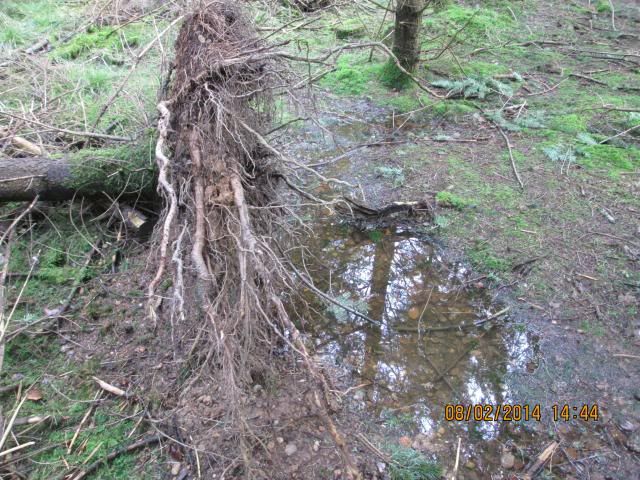Hi all, I recently saw a thread named 'fat wood group buy' so I thought I'd take some time off revising to hopefully share something useful..
There's no need to buy fat wood, especially after last winter! Fat wood is essentially resinous wood, commonly pine. All you need to do is take a bacho Laplander or similar saw into the woods and find an old downed pine (there are plenty after last winter). Resin seems to accumulate in knots and nodes in the wood, (hence why pine knots are used after dark on campfires for giving good light) so your target wood is old knots and (preferably) large chunks of exposed root, anywhere from finger thickness to less than wrist thickness..
Once you've cut down said root to reasonable, firesteel lengths and removed the outer bark and cleaned it up a bit with a knife, you should be left with wood that looks 'sticky', feels tacky to the touch and has dark transparent red 'veins' of resin like in the pictures:


All you need to do is carry a stick around with you... They make excellent tinder which burns about 3 times as long and with twice the intensity as the same volume of cotton wool, just scrape fine shavings off with the back of your knife, then add a few small shavings to give it some 'oomph' and light with a spark:





I carry it as a better, natural, and (relatively more) waterproof alternative to 'fluffy tinders' and I promise it weighs no more than a 50 pence piece...
I found out about this through Dave Canterbury's excellent YouTube presence so highly recommend his videos! Sorry I couldn't get more pictures of the actual fallen pine tree etc, just remember there's no need to spend money on the stuff
All the best, Lewis
There's no need to buy fat wood, especially after last winter! Fat wood is essentially resinous wood, commonly pine. All you need to do is take a bacho Laplander or similar saw into the woods and find an old downed pine (there are plenty after last winter). Resin seems to accumulate in knots and nodes in the wood, (hence why pine knots are used after dark on campfires for giving good light) so your target wood is old knots and (preferably) large chunks of exposed root, anywhere from finger thickness to less than wrist thickness..
Once you've cut down said root to reasonable, firesteel lengths and removed the outer bark and cleaned it up a bit with a knife, you should be left with wood that looks 'sticky', feels tacky to the touch and has dark transparent red 'veins' of resin like in the pictures:


All you need to do is carry a stick around with you... They make excellent tinder which burns about 3 times as long and with twice the intensity as the same volume of cotton wool, just scrape fine shavings off with the back of your knife, then add a few small shavings to give it some 'oomph' and light with a spark:





I carry it as a better, natural, and (relatively more) waterproof alternative to 'fluffy tinders' and I promise it weighs no more than a 50 pence piece...
I found out about this through Dave Canterbury's excellent YouTube presence so highly recommend his videos! Sorry I couldn't get more pictures of the actual fallen pine tree etc, just remember there's no need to spend money on the stuff
All the best, Lewis

